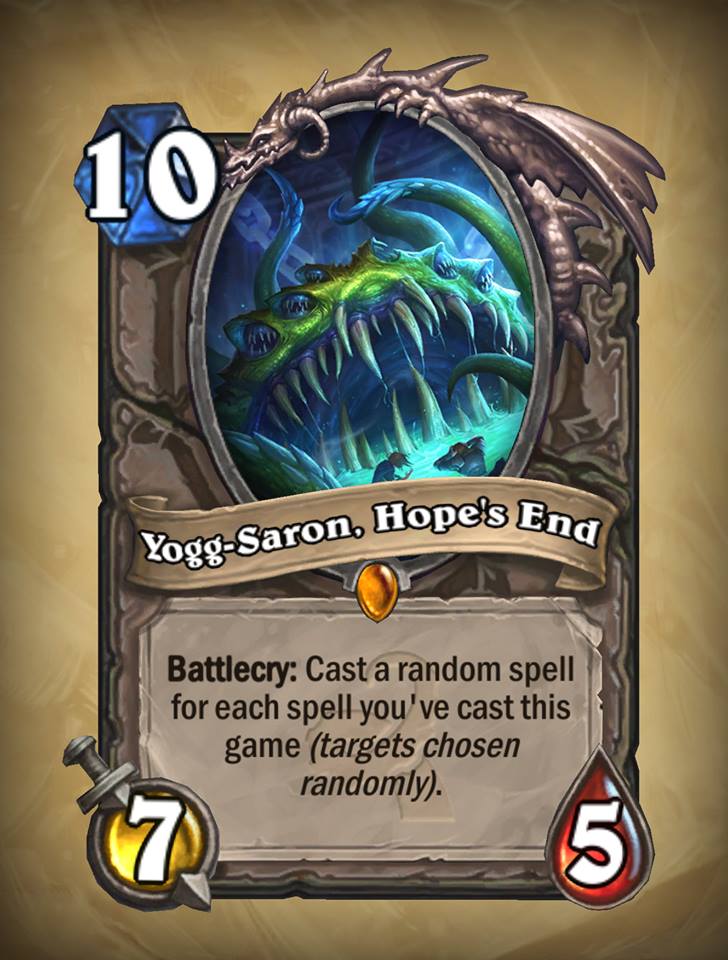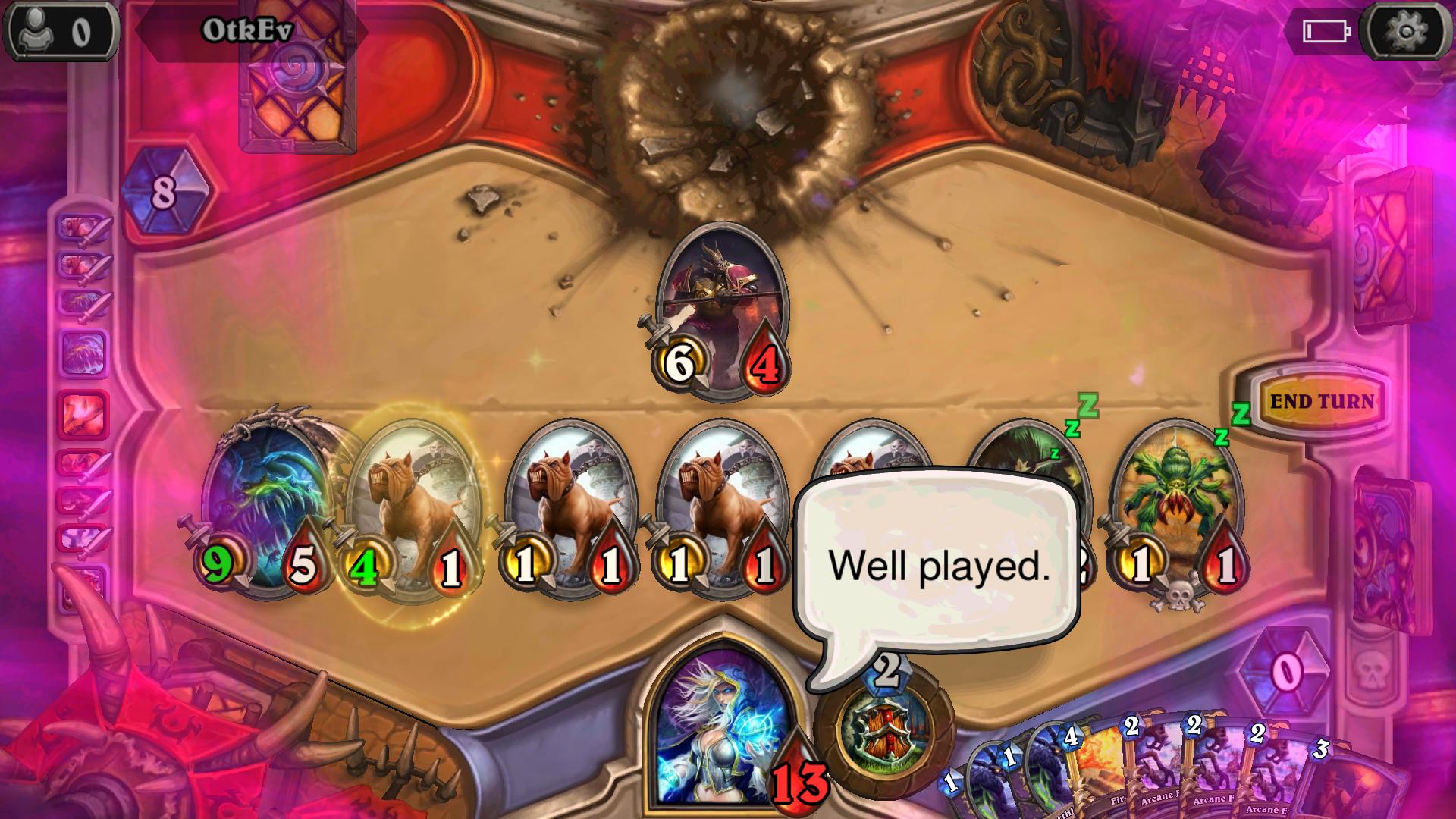Preamble
Hearthstone players in general were overjoyed when Standard rolled out. A large part of this was because the Goblins vs. Gnomes expansion was leaving. GvG added a lot of random effects to Hearthstone. These random effects were a lot of fun to watch, once in a while. However, they were highly competitive cards as well. This meant that professional games were being decided based on coin flips fairly regularly. Random effects were fun to watch, but having them decide important games was ridiculous. It felt like there was no validity to Hearthstone as an Esport with so many random variables. So when it was announced that GvG was leaving, people were overjoyed.
Blizzard even went so far as to say that they were attempting to remove random aspects of the game. They commented that they wanted to keep randomness, but not have it be competitive. They understood their mistakes, and learned from them. No one wants competitive games decided with lucky Imp-Losion rolls or Piloted Shredder results. Blizzard understood this and attempted to change it. They failed.
Introducing Yogg-Saron
On paper, Yogg-Saron can never work. Random effects with random targets? It should work exactly fifty percent of the time, in theory. However, what wasn’t taken into account was card wording. All of the cards that Yogg casts are cast on valid targets by the person who played Yogg. This means that cards like Consecration will only damage Yogg’s opponent in every scenario. Cards like Feral Spirits will always be beneficial, and Secrets all go to the Yogg player. Suddenly a massive number of spells are only beneficial to the caster.
In theory, Yogg should lose as many games as he wins, but in practice the numbers are skewed. There are quite a few cards that specify damaging your opponent, many which grant you cards, and quite a few that do other various beneficial effects.

The Breakdown
Realizing that Yogg was skewed in favour of the caster, players decided to look into the spells themselves. This list was compiled by Hearthpwn user nurgling13, and is entirely for Standard spells. Total number of spells: 206. Spells that benefit only the caster: 102. Cards that affect both players equally: 27. Cards that target randomly: 73. Cards that are typically bad for the caster: 4.
Right off the bat you see that of the 206 spells, 102 of them are beneficial to the caster. Of the remaining spells, 27 affect both players equally. Only 73 of the spells are actually random targets, with four being bad for the caster. For a card that is supposedly entirely random, only 35% of the cards that it pulls are actually random.
Let’s do the math, giving the random spells a 50% chance to be either good or bad. We’re also ignoring the spells that affect both players equally. So how often is Yogg-Saron beneficial to the caster? Any spell drawn has a full 77% chance to benefit the caster.
You May Like
What does this mean?
So what is the takeaway here? Well, we now know that in over three quarters of cases, Yogg benefits the caster. Suddenly a supposedly random card isn’t nearly as random. You may not get what you want from it, but you will very rarely get something negative. Players were very quick to realize this, even drawing up simulators before Whispers launched. Rather than being a random, fun card, players were crafting decks around the idea of Yogg-Saron.
There is one thing left to consider, however. Yogg is even better than the 77% would have you believe. This is because the one thing left out of these calculations, is when Yogg is played. As one professional player put it, you build a solid deck, and then use Yogg as your “oh shit” card. Meaning you build a deck that can win games, and then use Yogg if you find yourself losing. Because of his innate ability to deal massive damage, Yogg very often wipes the board. At the very least, he manages to cripple your opponent’s board in most cases. He is a great card to play when you are out of other options.
Playing around Yogg-Saron
Now that we know the strength of Yogg, how do we play around him? This is the part that frustrates me the most. Due to the nature of Yogg, there simply isn’t any way to play around him. You can certainly plan for the worst, but there’s simply no way to avoid dying in certain scenarios. And these scenarios aren’t simply dealing thirty damage to you either.
Here’s an example from my own games. I was playing earlier today, running a Renolock deck. My opponent managed to get me down to one health, but I had Reno and healed to full. At this point he has one 3/1 minion in play while I have an 8/8 and Reno. I’m at 25, he’s at 15. I have seven cards in hand, he has one. He plays Yogg-Saron. Yogg plays Cabalist’s Tome, as well as Thoughtsteal, giving him a full hand. He kills my Reno, and changes my 8/8 into a boar. He swipes my face, and plays a Hunter secret. Oh, and then he gives himself and the 3/1 stealth.
Suddenly I’ve found myself going from winning to massively losing with a single card played. Since I couldn’t target his board, there wasn’t much I could do. The Hunter secret was Misdirection, and my boar hit me in the face. I played my hand and passed. He then used the cards from Cabalist’s Tome as well as his board to finish me off. Twenty-five health to zero in two turns, based entirely on one card.

How does this affect competitive Hearthstone?
Clearly Yogg-Saron has the potential to do crazy things. As players began to realize the strength of Yogg, we began to see more and more of it. In the high ranks of Hearthstone ladder, all the way up to legend, Yogg is very common. This is where I encounter him regularly, and where I despise him. But how does this affect competitive?
While we have seen a few instances of Yogg appearing in tournaments, for the most part he is absent. The reason for this is very simple: professional players aren’t willing to rely on luck. It may be a 77% chance to be good, but that’s a 23% chance to be bad. Losing a quarter of your games to poor luck simply isn’t something players want to do in tournaments. So while I may hate Yogg with all my heart, he doesn’t affect the competitive scene too much. In the end, Blizzard has achieved their goal, making a fun random card that doesn’t ruin competitive Hearthstone. Even if I do hate him.
















